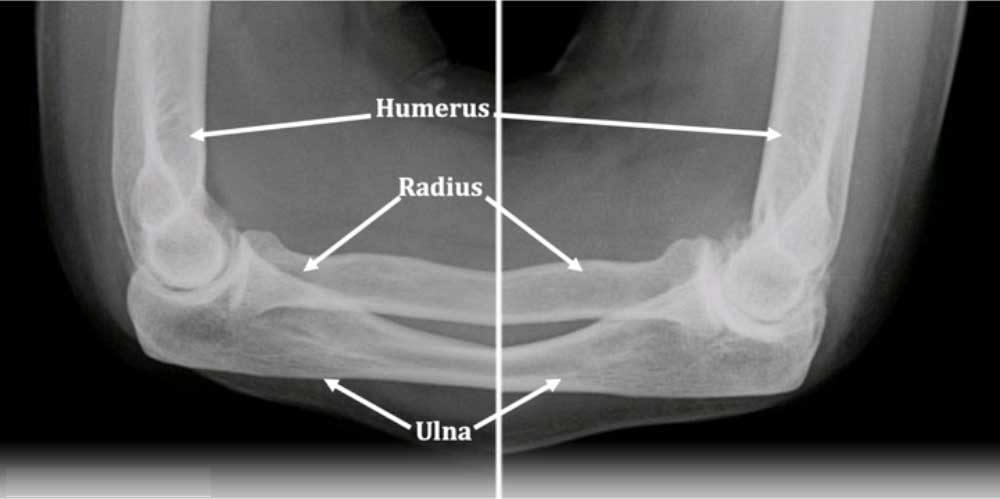An Overview of Frozen Elbow
The elbow joint is referred to as a “hinge” joint. It bends, straightens, extends—and offers a range of flexion up to 145 degrees. Stiff elbow refers to those individuals who experience pain or problems when extending their elbow greater than 30 degrees. There are many factors that may cause a frozen elbow including arthritis of the elbow, post-traumatic injury, bicep tendon tear, infection, and congenital and degenerative conditions.
Anatomy
The elbow joint is made up of the following three bones: the humerus (upper arm bone), ulna (forearm bone on the pinky finger side), and the radius (forearm bone on the thumb side). Ligaments surround the joint to hold it together and prevent dislocation.
Symptoms of Stiff Elbow
The major symptoms of frozen elbow are pain and loss of motion. The onset of symptoms may be gradual or sudden, depending on the cause of the condition. In most cases, the elbow will become inflamed and produce pain with movement. This pain will gradually worsen over time and eventually lead to stiffness. As the condition further progresses pain may ultimately improve; however, movement will continue to be limited and difficult.
Treatment for Frozen Elbow
Non-Surgical
There are several treatment options for people experiencing stiff elbow. The goal in treatment is to provide the patient with a pain-free, functional and stable elbow. This means gaining flexion and range of motion. Physical therapy is usually the best course of treatment. Working with a physical therapist, the patient will perform exercises and strengthening techniques to gain flexion, control and motion. Rest, anti-inflammatory medications, and splinting may also be used to help treat the condition.
Surgical
Elbow surgeries are recommended when other frozen elbow treatment alternatives are no longer working. Elbow arthroscopic surgery is usually the best option. During this procedure, Dr. Millett will make several small incisions and insert an arthroscope into the elbow joint. This will allow him to identify loose bodies, fragments and damaged cartilage. Recovery is usually about 3 months. See Arthroscopic Elbow surgery for more details on this procedure.
For additional resources on stiff elbow, or to discuss your treatment options for frozen elbow, please contact the office of Dr. Peter Millett.

